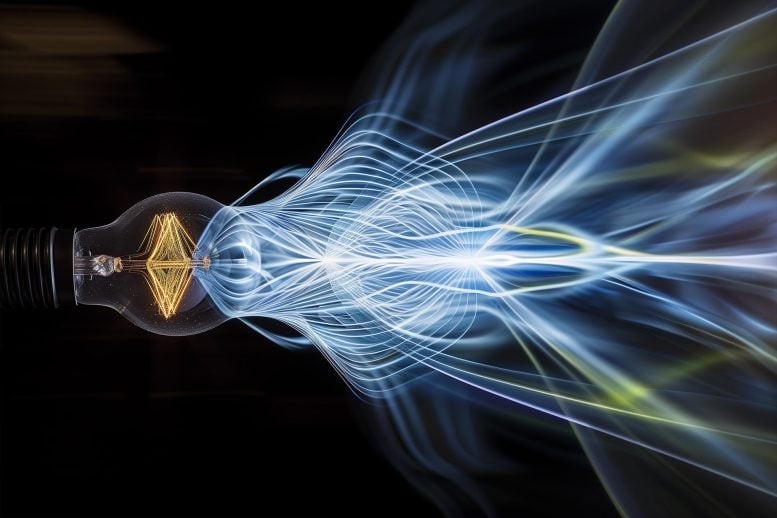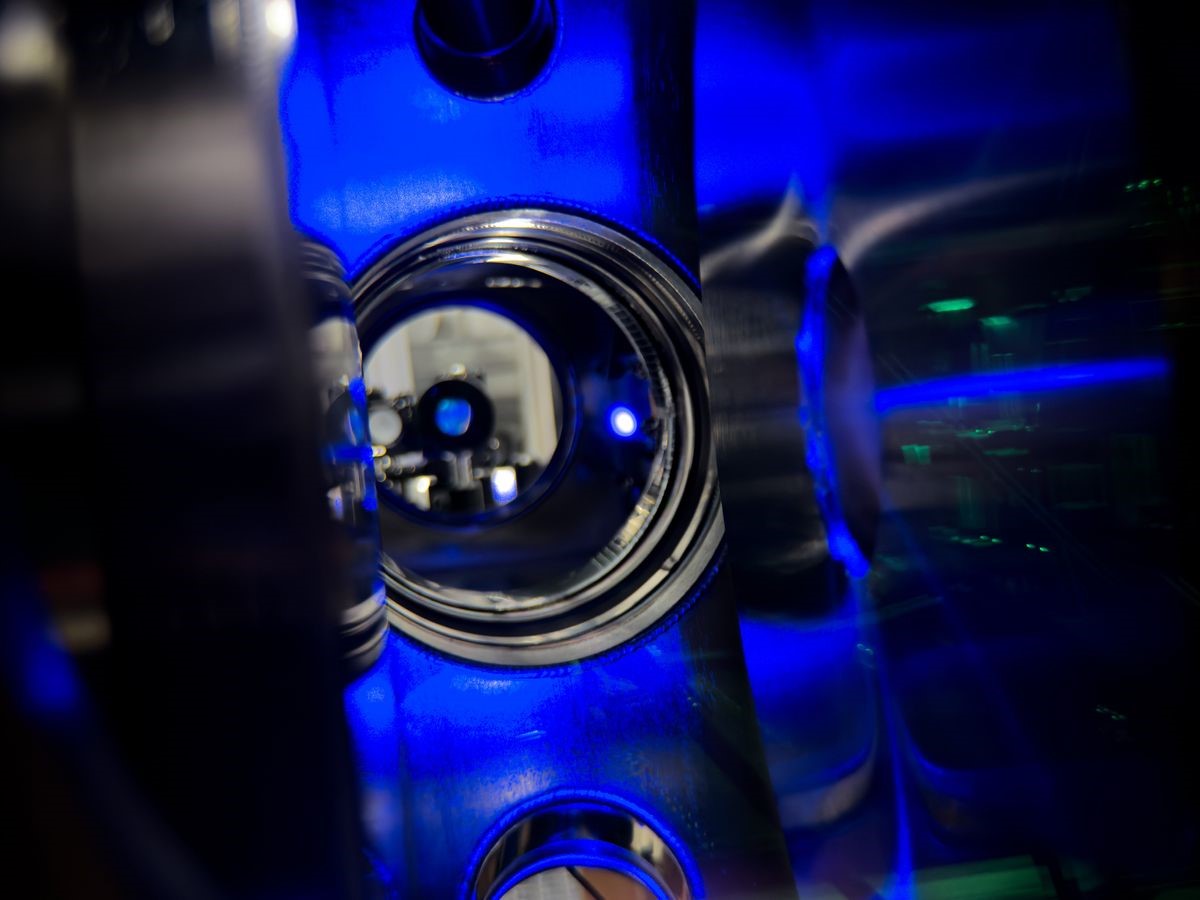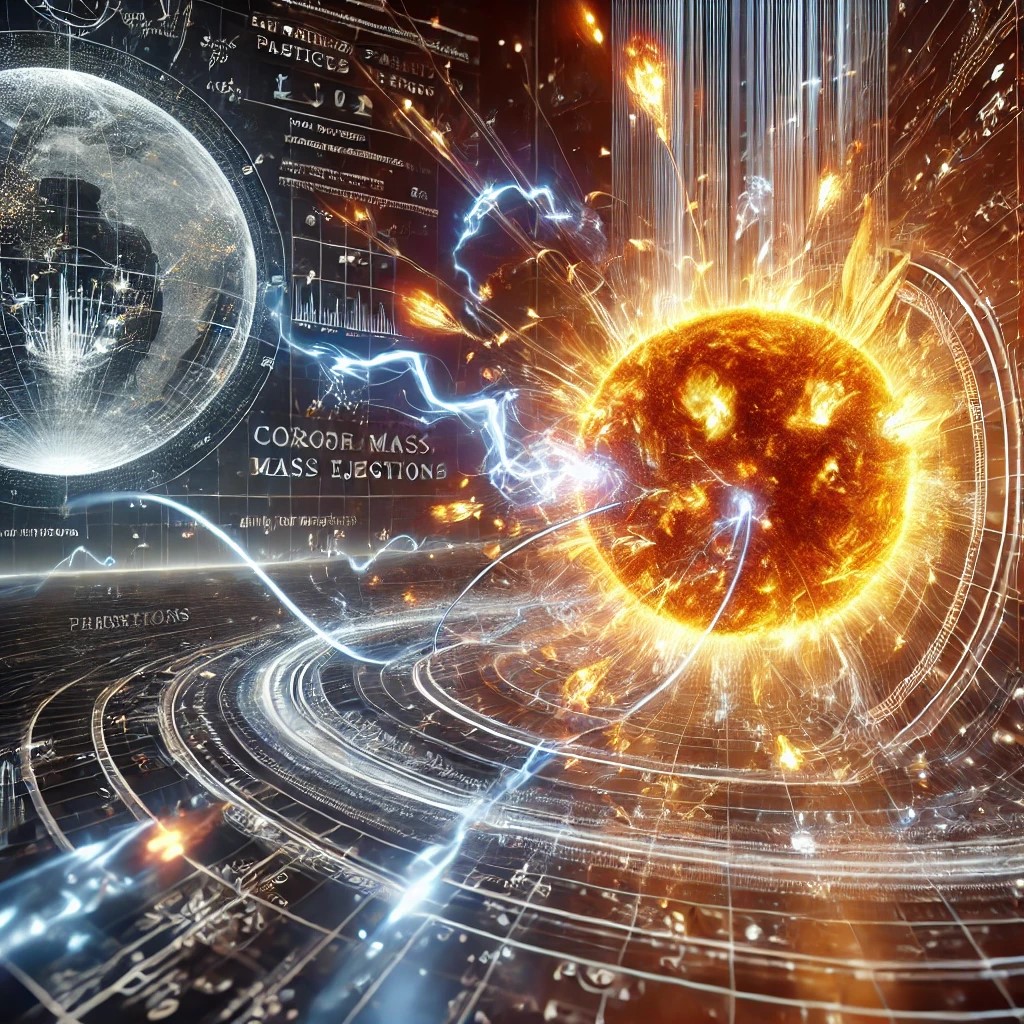Machine Learning Could Enhance the Sensitivity of Quantum Sensors to Dark Matter
What will it take to detect dark matter, the elusive and nearly intangible substance that could make up around 85% of all matter in the universe? Although dark matter surrounds us, subtly influencing regular matter, past searches have failed to reveal it. However, a recent study proposes that using machine learning could enable quantum sensors to finally locate it. These highly sensitive sensors might also have other uses, including GPS-free navigation, detecting underground bunkers, and identifying gravitational ripples in space-time from the Big Bang.

Figure 1. Machine Learning May Boost Quantum Sensors' Sensitivity to Dark Matter.
We know dark matter exists due to its gravitational influence on the movement of galaxies, yet its exact composition and how it interacts with regular particles remain unknown. While many dark matter models have been suggested, they all predict incredibly tiny effects on normal matter. One promising approach to detecting these small interactions is through quantum sensors. By exploiting the vulnerability of quantum effects to external interference, quantum sensors are designed to detect even the most subtle disturbances in the environment, such as potential interactions between dark matter and regular matter. Figure 1 shows Machine Learning May Boost Quantum Sensors' Sensitivity to Dark Matter.
More Sensitive Atom Interferometers
The new approach “does not focus on creating the perfect atom mirror,” explains Kovachy. “Instead, it aims to enhance the collective effectiveness of multiple atom mirrors, compensating for the imperfections of each individual one.” This results in a 50-fold improvement in the performance of an atom interferometer in laboratory tests.
“When we began this project, I hadn’t expected such a significant improvement,” Kovachy admits. “It’s always exciting when unexpected breakthroughs happen.”
The team now plans to apply their technique to “the first major dark matter search campaigns using atom interferometers, which are currently under development,” Kovachy shares. “We expect these searches to begin in three to five years, and we hope that, along with better atom optics, we can increase their sensitivity by multiple orders of magnitude compared to current capabilities.”
In addition to dark matter detection, more precise atom interferometers could have other applications, such as GPS-free navigation. Kovachy notes that global navigation satellite systems, which rely on satellite links, are ineffective underwater or underground, and are vulnerable to interference, spoofing, and weather conditions. A quantum motion sensor could form the basis of an inertial navigation system that operates independently of external signals.
Kovachy also notes that atom interferometers can be used to measure the strength of Earth’s gravitational field, which varies across the planet’s surface depending on the distribution of mass beneath it. Potential applications for such gravity sensors include detecting concealed underground structures, locating subterranean natural resources, uncovering underground archaeological sites, and monitoring volcanic activity and groundwater flows.
The Mystery of Dark Matter
Dark matter is an invisible, enigmatic substance that is believed to make up about 85% of the matter in the universe. Although its existence has been inferred from its gravitational effects on galaxies and other cosmic phenomena, scientists still don't know exactly what it's made of or how it interacts with ordinary matter. Despite being all around us, dark matter has not yet been directly detected.
Challenges in Detecting Dark Matter
Current efforts to detect dark matter face significant challenges. The interactions between dark matter and regular particles are predicted to be incredibly weak and almost imperceptible. Traditional detection methods have failed to identify these subtle effects, mainly due to the difficulty in isolating the signals from the immense background noise in experiments.
Quantum Sensors: A New Approach
Quantum sensors are a potential solution for detecting dark matter. These sensors take advantage of delicate quantum effects that are highly sensitive to disturbances. Because quantum states are easily influenced by external forces, quantum sensors can detect even the smallest interactions. This makes them an ideal candidate for picking up the faint signals that might be caused by dark matter interacting with regular matter.
The Role of Machine Learning
While quantum sensors are sensitive, they also require a method to filter out noise and enhance the accuracy of their measurements. This is where machine learning (ML) comes in. ML algorithms can be used to analyze vast amounts of data and identify patterns that might otherwise go unnoticed. By optimizing the sensor's performance through real-time data processing, machine learning can significantly improve the sensitivity of quantum sensors, making them more capable of detecting dark matter.
Broader Implications and Applications
Beyond dark matter detection, quantum sensors enhanced with machine learning have the potential for various applications. They could be used for GPS-free navigation, detecting underground bunkers, or measuring gravitational waves. The ability to improve the sensitivity of these sensors opens the door to new technologies that could have profound effects on both scientific research and everyday life.
This series highlights the exciting intersection of quantum technology, machine learning, and fundamental physics in the search for dark matter.
Source: IEEE Spectrum
Cite this article:
Priyadharshini S (2025), The Battery Innovation That Could Revolutionize Electric Vehicles and Renewable Energy, AnaTechMaz ,pp.116















